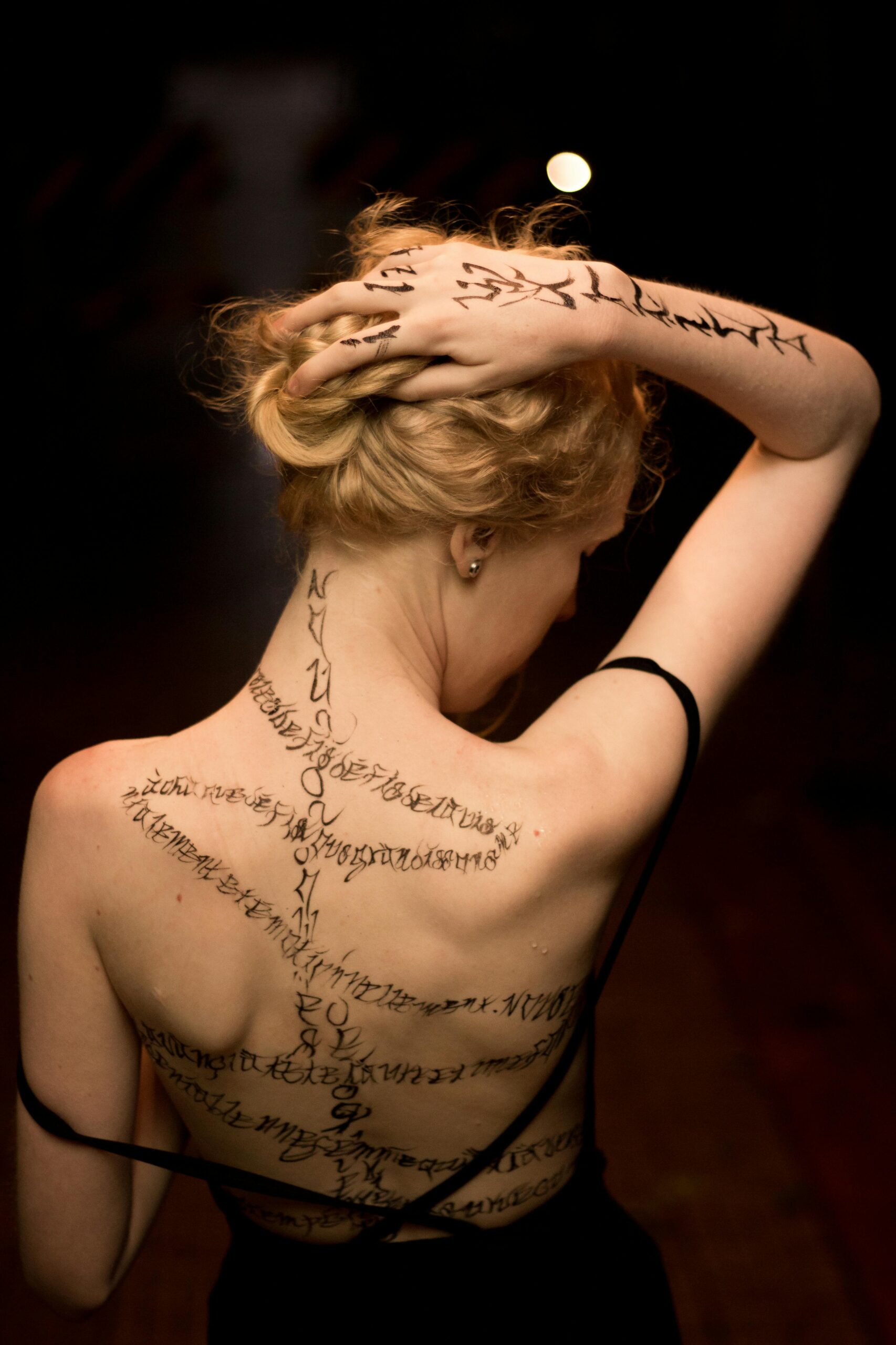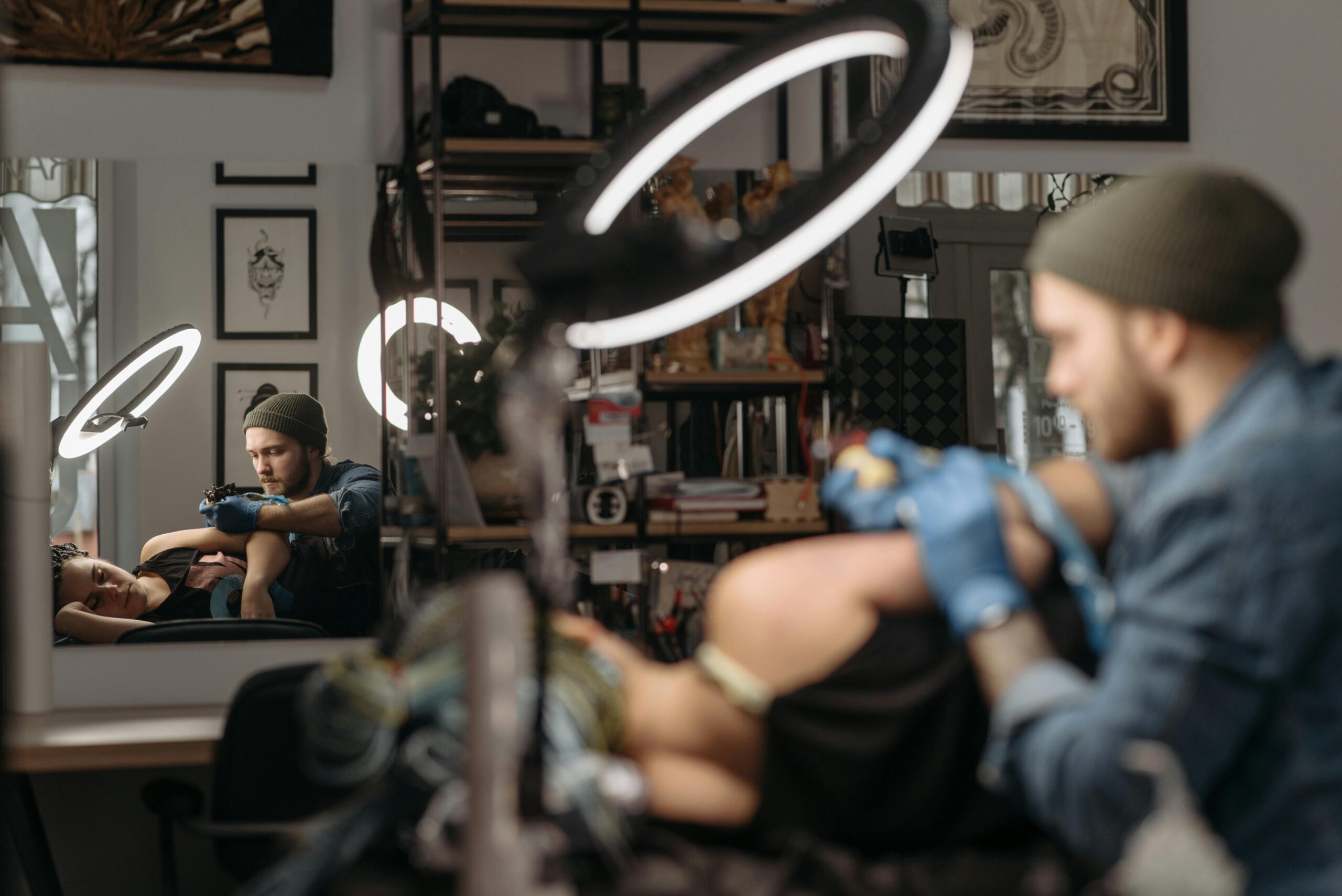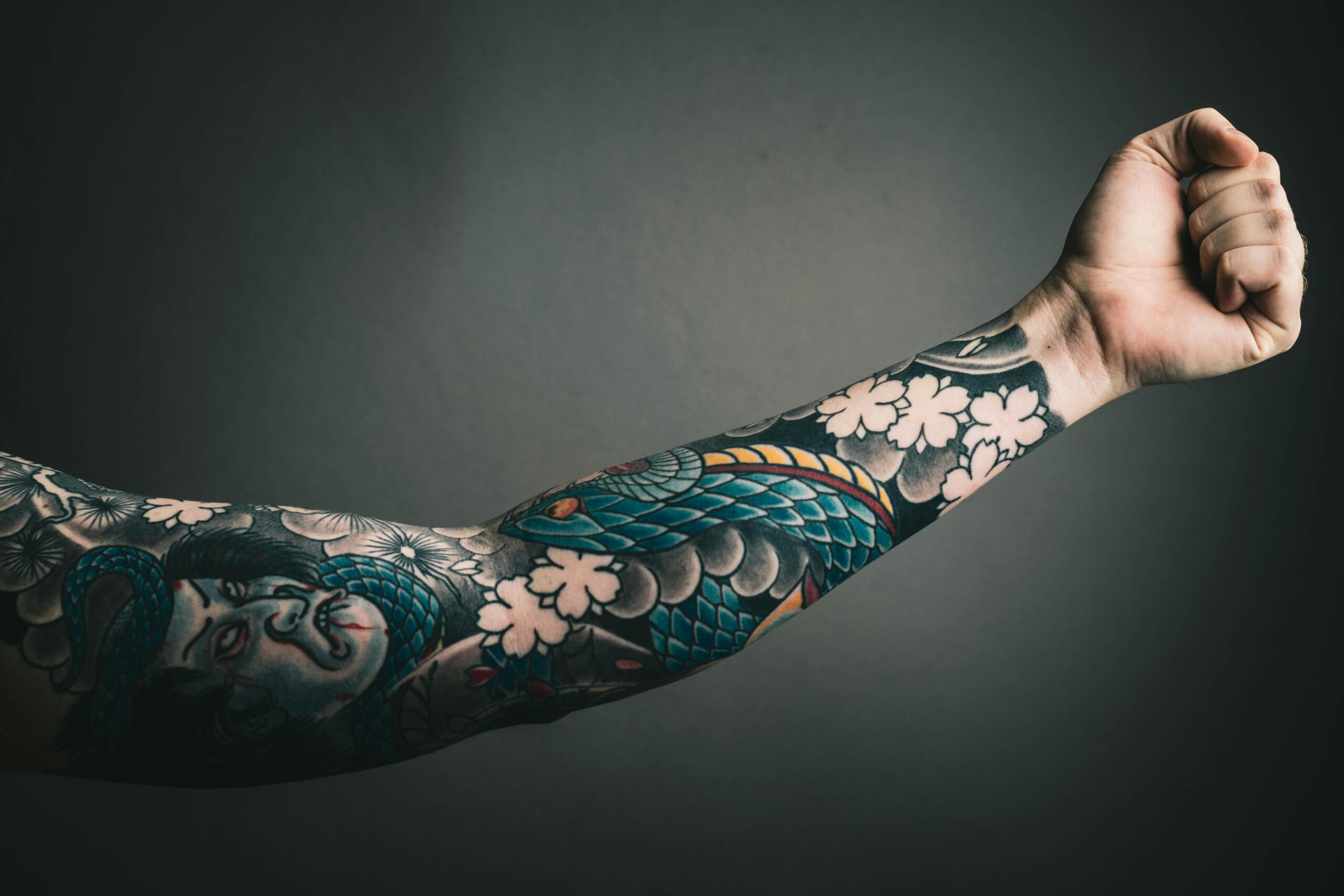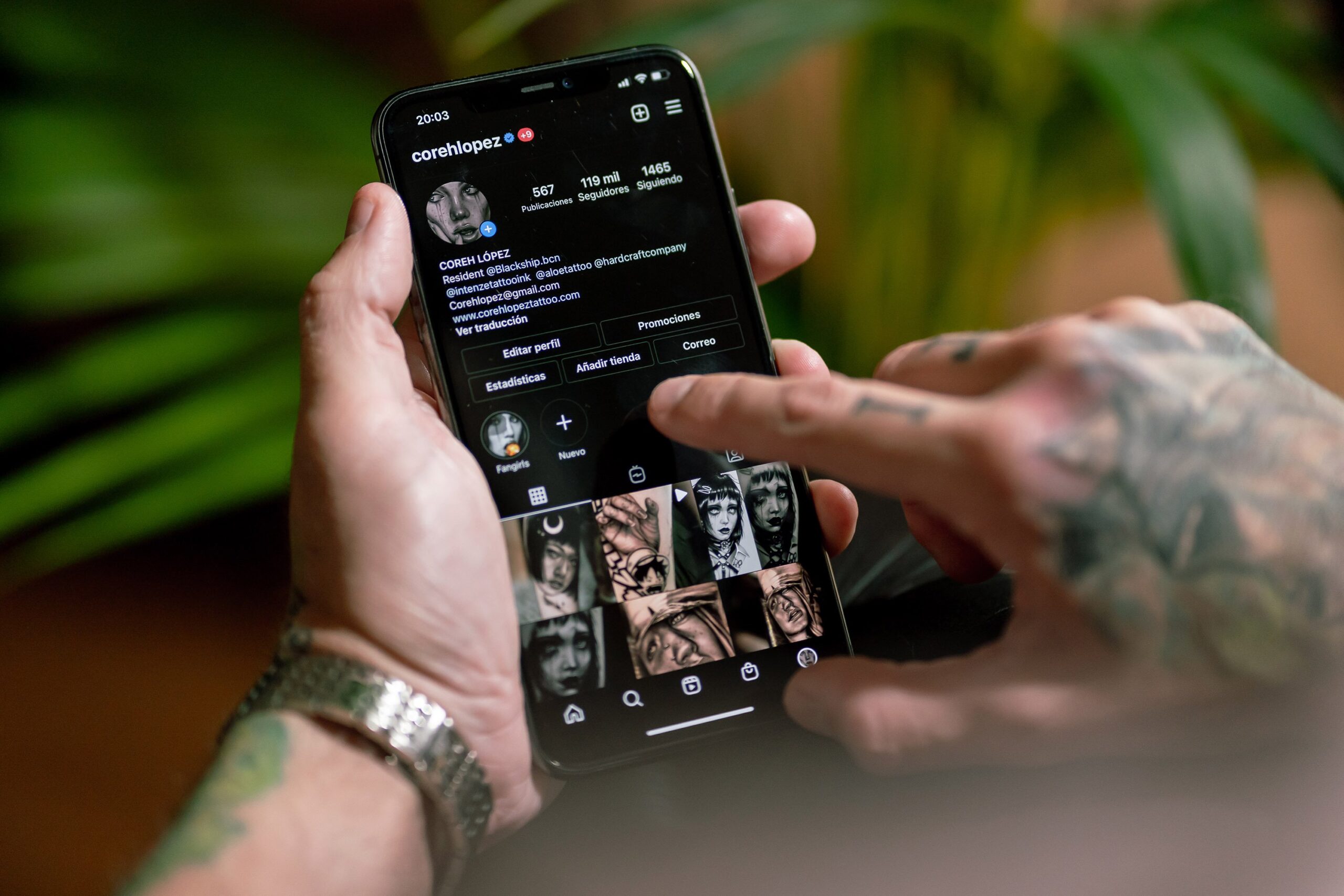The tattoo industry evolves constantly, with new techniques, aesthetic preferences, and cultural influences reshaping what clients request and value. Understanding emerging trends helps aspiring artists develop relevant skills positioning them for career success. This forward-looking guide identifies significant trends shaping tattooing through 2026 and beyond—helping students focus practice efforts strategically whilst developing timeless fundamentals that transcend temporary fashions.
The Evolution of Tattoo Trends
Tattoo trends follow predictable patterns influenced by broader cultural movements, technological advances, social media evolution, and generational aesthetic preferences. Understanding these driving forces helps you anticipate shifts rather than simply reacting to changes after they’ve fully emerged.
According to trend forecasting research from WGSN, aesthetic trends in personal decoration typically emerge 18-24 months before mainstream adoption, providing forward-thinking artists opportunity to develop capabilities before market demand peaks. Early trend adoption positions you as innovator rather than follower, commanding premium pricing and attracting trend-conscious clients.
However, trend awareness must balance with timeless skill development. Chasing every ephemeral fashion creates inconsistent portfolios and prevents depth development in any single area. Strategic artists identify trends with staying power whilst maintaining core capabilities in classic styles that remain perpetually relevant.
Successful trend navigation requires: monitoring cultural and aesthetic movements beyond tattooing specifically, developing adaptable technical skills transferring across styles, maintaining core portfolio of timeless work whilst exploring emerging aesthetics, and positioning new capabilities authentically within your artistic identity rather than opportunistically jumping trends.
Your comprehensive training foundation provides adaptable skills allowing trend exploration without sacrificing fundamental excellence.
Statistics Canada cultural trends data provides insights into broader aesthetic movements influencing tattoo industry evolution.
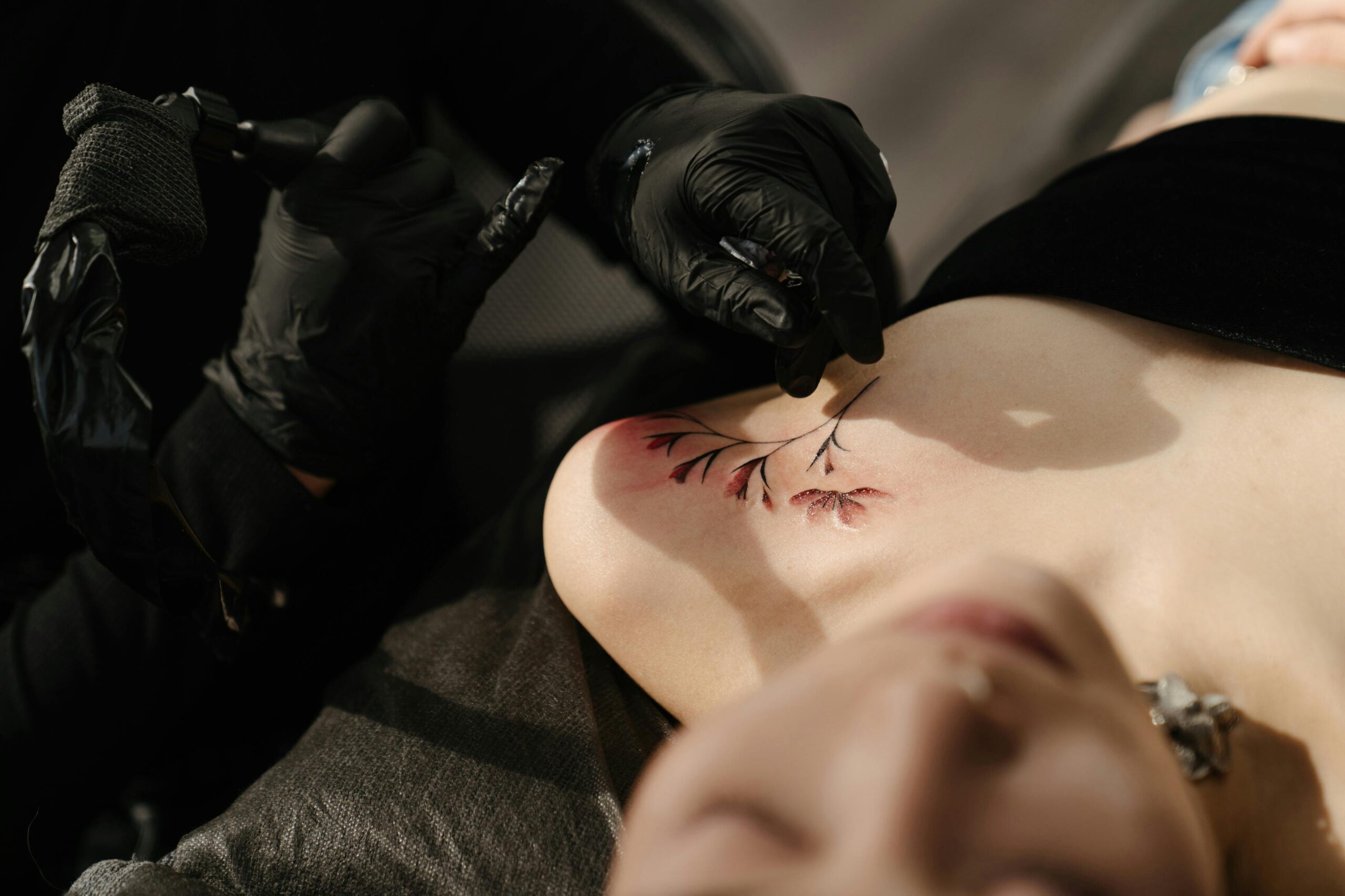
Trend 1: Hyper-Delicate Fine Line Evolution
Fine line tattooing continues evolving toward increasingly delicate, subtle work that pushes technical boundaries whilst satisfying growing demand for understated body art suitable for professional and corporate environments.
Microscopic Detail and Precision
2026 will see fine line work becoming even more refined, with artists achieving detail levels previously impossible through: advanced needle configurations enabling micro-precision, improved ink formulations providing finer pigment particles, technological innovations in equipment allowing unprecedented control, and elevated technical training producing more capable practitioners.
This evolution creates opportunities for artists developing exceptional fine line capabilities. The market increasingly segments between basic fine line work (now commonplace) and true precision micro-work commanding premium pricing.
Practice Priorities: Develop exceptionally steady hands through targeted exercises, master single-needle techniques achieving hair-thin consistent lines, practice microscopic botanical details and delicate script work, and study jewelry design and architectural drawing for precision inspiration.
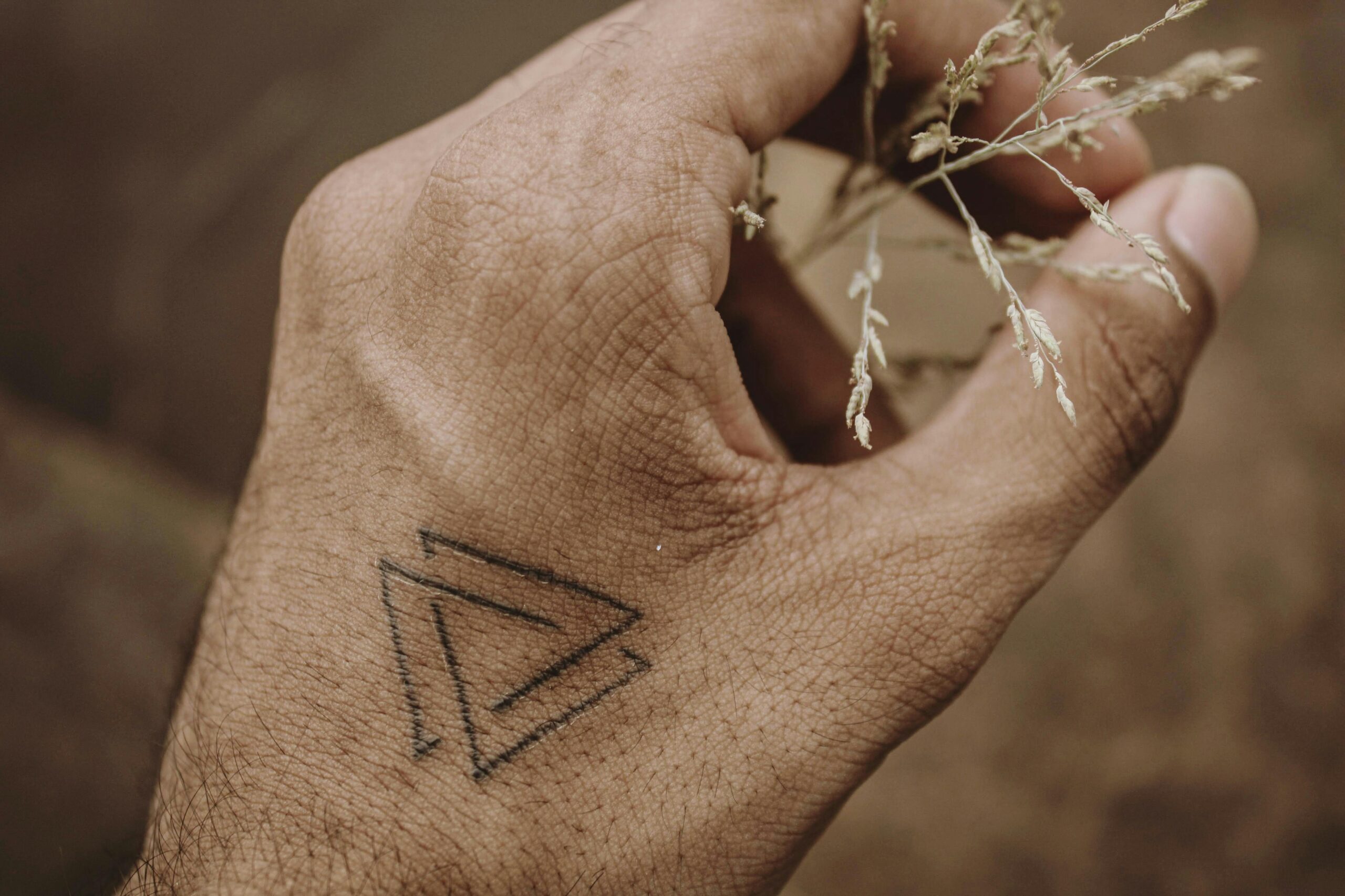
Minimalist Symbolic Work
The minimalist aesthetic continues gaining momentum, with clients seeking meaningful pieces that whisper rather than shout. This trend particularly appeals to professionals, parents, and individuals wanting tattoos that integrate subtly into various social contexts.
Future minimalist work emphasises: refined symbolism with personal meaning, strategic placement in easily concealed areas, monochromatic or limited colour palettes, and exceptional linework quality where every mark matters.
Practice Priorities: Develop strong understanding of symbolic imagery across cultures, master negative space utilization creating impact through restraint, practice consistent ultra-fine linework, and explore geometric minimalism combining precision with meaning.
According to social media trend analysis from Hootsuite, fine line hashtags show 40% year-over-year growth whilst traditional style tags show 15% growth, indicating sustained fine line demand continuing through 2026 and beyond.
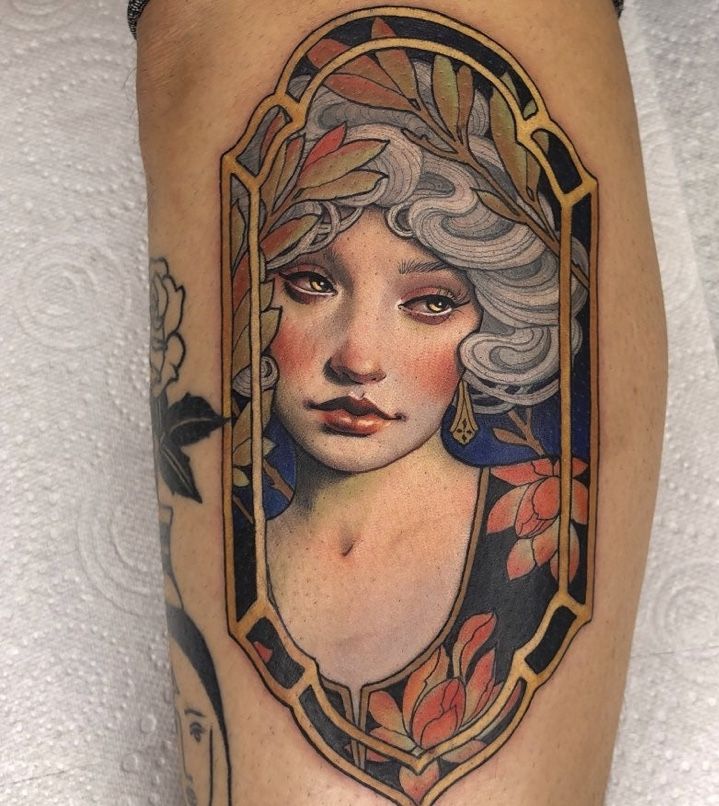
Trend 2: Neo-Traditional Renaissance
Traditional tattooing experiences sophisticated evolution through neo-traditional approaches combining classic composition principles with contemporary technical capabilities and expanded colour palettes.
Contemporary Traditional Aesthetics
Neo-traditional maintains bold outline and clear composition foundations whilst incorporating: dimensional shading creating depth beyond traditional flat colouring, expanded colour palettes including pastels and unconventional combinations, subject matter evolution beyond classic imagery, and refined linework showing technical advancement.
This style appeals to collectors appreciating traditional tattooing’s heritage whilst wanting contemporary refinement. Neo-traditional bridges generational aesthetic preferences, attracting both younger clients and traditional enthusiasts.
Practice Priorities: Master traditional composition fundamentals (bold outlines, clear readable designs), develop sophisticated shading and dimensional techniques, practice colour theory for unconventional palette combinations, and study both traditional flash history and contemporary illustration.
Subject Matter Expansion
Traditional iconography expands beyond eagles, roses, and nautical themes to encompass: Canadian flora and fauna (maple leaves, wildlife, landscapes), portrait work within traditional composition frameworks, contemporary cultural references interpreted through traditional aesthetic, and personal symbolism given traditional visual treatment.
This expansion allows traditional specialists to serve diverse client preferences without abandoning foundational style principles that define their expertise.
Practice Priorities: Develop traditional illustration skills across diverse subjects, practice adapting contemporary references into traditional visual language, master traditional colour packing and saturation techniques, and study Japanese traditional influence informing neo-traditional evolution.
Your style development training prepares you for sophisticated style fusion that neo-traditional work demands.
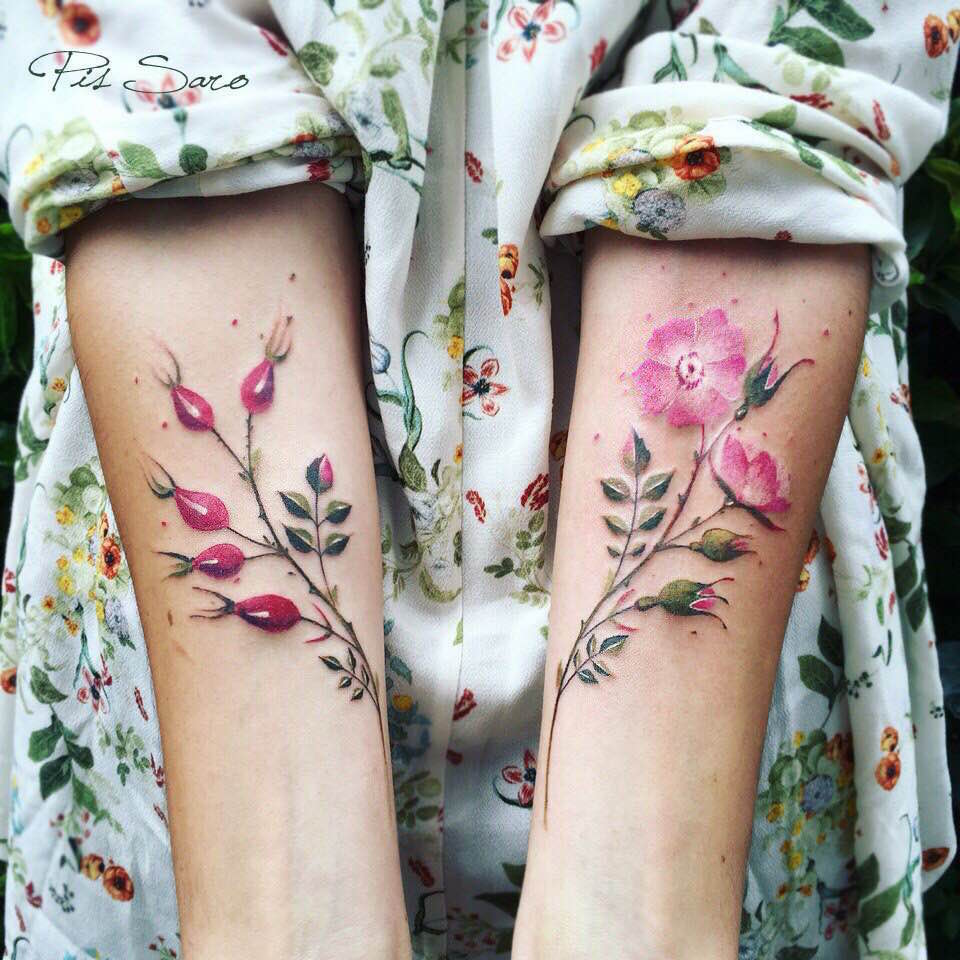
Trend 3: Organic and Botanical Dominance
Nature-inspired tattooing continues explosive growth, driven by environmental consciousness, wellness culture emphasis, and aesthetic preferences favouring organic forms over geometric precision.
Hyperrealistic Botanical Detail
Botanical tattoos evolve toward scientific illustration precision, featuring: anatomically accurate plant structures, seasonal variation representation, native species celebration, and ecosystem storytelling through multiple related elements.
Canadian artists particularly benefit from this trend given our unique flora providing distinctive subject matter unavailable elsewhere globally. Botanical specialists focusing on Canadian natives create signature work international clients specifically seek.
Practice Priorities: Study botanical illustration techniques and actual plant anatomy, develop subtle colour gradient capabilities for realistic petal rendering, practice delicate leaf structure and vein work, and research native Canadian species creating distinctive portfolio differentiation.
Flowing Organic Compositions
Beyond individual botanical elements, trend toward flowing organic compositions incorporating: multiple related natural elements, compositions following body contours naturally, monochromatic or limited earth-tone palettes, and negative space integration creating breathing room.
These pieces appeal to clients seeking larger coverage with cohesive natural aesthetic rather than isolated symbol tattoos.
Practice Priorities: Develop compositional skills adapting designs to body anatomy, practice fluid organic linework capturing natural movement, master subtle shading creating depth without heavy contrast, and study historical botanical illustration for compositional inspiration.
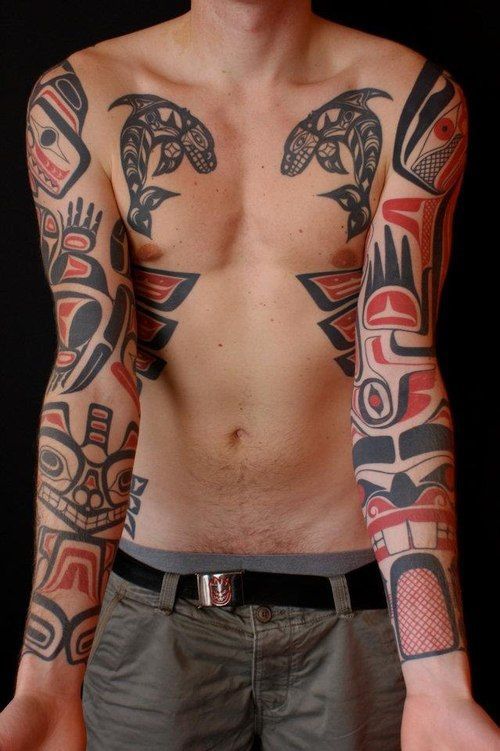
Trend 4: Indigenous Art Influence and Cultural Respect
Growing appreciation for Indigenous Canadian art creates opportunities for respectful incorporation of design principles, though traditional Indigenous designs require Indigenous artists or explicit permission.
Respectful Design Integration
Canadian tattoo artists can incorporate Indigenous art influences through: dot work techniques adapted to tattooing, earth tone palettes reflecting Canadian landscape, storytelling approaches informing composition, and negative space usage characteristic of Indigenous art.
This influence allows contemporary Canadian tattoo artists developing distinctive aesthetic connected to cultural context whilst maintaining appropriate respect for Indigenous communities.
Practice Priorities: Study Indigenous Canadian art history and principles (with proper respect and acknowledgment), develop earth-tone palette expertise, practice dot work and stippling techniques, and understand cultural protocols around design usage.
Critical Note: Direct use of Indigenous designs, symbols, or traditional patterns without permission constitutes cultural appropriation. Consult Indigenous Corporate Training resources for understanding appropriate cultural engagement.
Trend 5: Technology-Enhanced Tattooing
Technological advancement reshapes tattooing in subtle but significant ways affecting both execution and client experience.
Digital Design Integration
Design processes increasingly incorporate digital tools: iPad illustration for client consultations, augmented reality placement preview, AI-assisted composition refinement, and digital portfolio presentation.
While traditional drawing skills remain essential, digital fluency becomes competitive advantage allowing sophisticated client communication and design refinement.
Practice Priorities: Develop Procreate or similar digital illustration capabilities, practice digital mockup creation showing designs on body photos, explore AR applications for client consultations, and maintain traditional drawing foundations alongside digital skills.
Advanced Equipment Innovation
Equipment continues evolving through: wireless machine adoption, precision cartridge advancement, improved ink formulations, and ergonomic design reducing artist fatigue.
Staying current with equipment innovations provides technical advantages whilst demonstrating professional commitment to craft excellence.
Practice Priorities: Research emerging equipment options and their applications, test new needle configurations and cartridge systems, explore improved ink formulations for specific applications, and invest strategically in innovations providing genuine technical advantages.
Your equipment training provides foundation for evaluating and adopting technological innovations strategically.
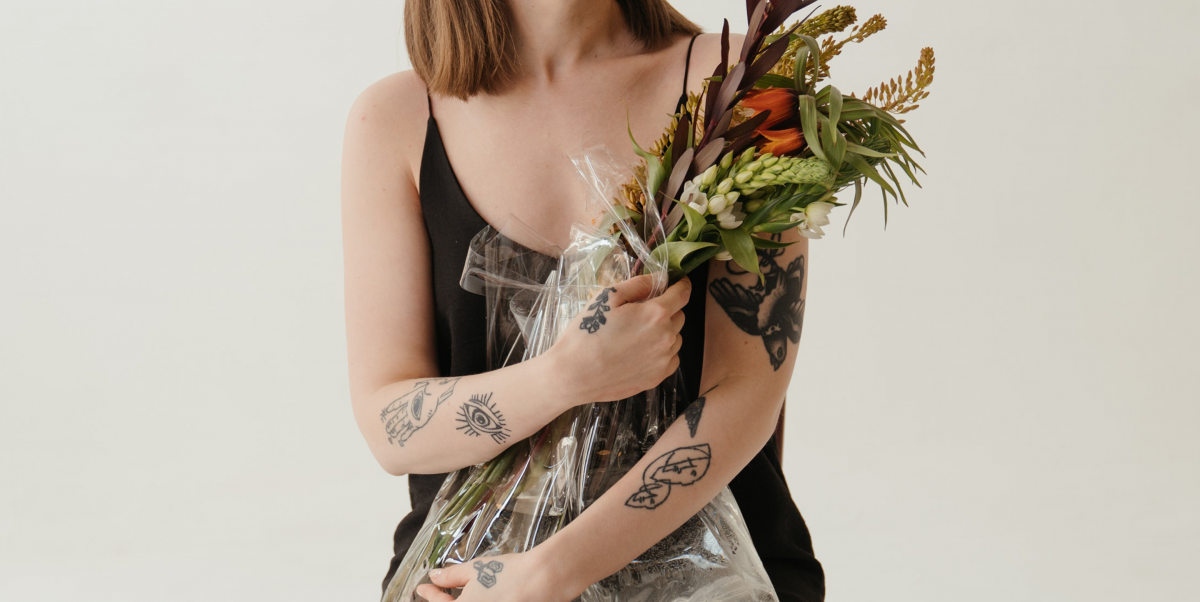
Trend 6: Sustainability and Ethical Consciousness
Growing environmental and ethical consciousness affects client preferences and industry practices.
Vegan and Sustainable Practices
Clients increasingly request: vegan ink formulations, sustainable aftercare products, eco-friendly studio practices, and ethical supply chain transparency.
Artists adopting sustainable practices attract environmentally conscious demographic whilst demonstrating broader value alignment beyond pure artistic capability.
Practice Priorities: Research vegan ink options and their technical characteristics, develop relationships with sustainable supply companies, implement eco-friendly studio practices, and communicate sustainability commitments through marketing.
Environment and Climate Change Canada resources provide guidance on sustainable business practices applicable to tattoo studios.
Longevity-Focused Design
Counter to disposable culture, growing emphasis on tattoos designed for lifetime satisfaction: timeless aesthetic choices over trendy designs, placement considering aging skin, technical execution ensuring good healing, and colour selections proven to age gracefully.
This consciousness appeals to clients making considered permanent decisions rather than impulse choices.
Practice Priorities: Develop understanding of how tattoos age across placements and styles, practice designs maintaining clarity long-term, educate clients about longevity considerations, and build reputation for work that ages beautifully.
Trend 7: Personal Storytelling and Meaningful Work
Moving away from flash selection, clients increasingly seek custom tattoos telling personal stories through sophisticated visual narratives.
Narrative Composition
Multi-element designs telling complete stories rather than isolated images: personal milestone documentation, family heritage celebration, life journey representation, and memorial work honouring relationships.
This trend favours artists developing strong custom design capabilities and client communication skills translating abstract concepts into visual narratives.
Practice Priorities: Develop consultative skills extracting meaningful client stories, practice complex multi-element composition, study symbolic representation across traditions, and refine custom design processes creating emotionally resonant work.
Documentary-Style Portraiture
Portrait work evolves toward documentary aesthetic capturing authentic moments rather than idealized representations: candid photograph interpretation, emotional expression emphasis, lifestyle context inclusion, and photojournalistic composition principles.
This style appeals to clients wanting genuine personal documentation rather than generic portrait work.
Practice Priorities: Master realistic portrait techniques across skin tones, develop subtle expression capture capabilities, practice composition balancing face with contextual elements, and study photojournalism for authentic moment selection.
Your custom design training prepares you for sophisticated storytelling work this trend demands.
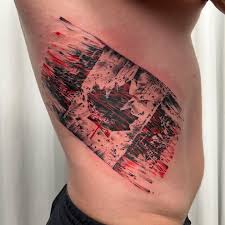
Trend 8: Canadian Identity Expression
Growing pride in Canadian identity creates demand for tattoos celebrating Canadian culture, geography, and heritage.
Regional Pride
Tattoos celebrating specific Canadian regions: Maritime landscapes and culture, Prairie horizons and agricultural heritage, Rocky Mountain imagery, Northern wilderness themes, and urban Canadian cityscape tributes.
Artists developing strong regional aesthetic create distinctive positioning attracting both local clients and Canadians from other regions celebrating their origins.
Practice Priorities: Study your region’s distinctive visual characteristics, develop landscape and nature rendering capabilities, practice incorporating Canadian wildlife and flora, and understand regional cultural elements worth celebrating.
Bilingual and Multicultural Elements
Canada’s multicultural character influences tattoo design through: bilingual text elements (English/French), multicultural symbolic fusion, Indigenous art respect and appropriate acknowledgment, and celebration of immigrant cultural heritage.
This diversity creates opportunities for artists developing culturally sensitive, inclusive approaches to design.
Practice Priorities: Develop understanding of major cultural traditions present in Canadian society, practice respectful cultural element incorporation, study calligraphy across languages, and build consultation skills addressing multicultural client needs.
Canadian Heritage resources provide insights into cultural diversity informing inclusive artistic practices.
Balancing Trend Awareness with Timeless Fundamentals
While understanding trends provides career advantages, sustainable success requires balancing trend responsiveness with timeless skill development.
Core Capabilities Transcending Trends
Certain skills remain perpetually valuable regardless of aesthetic shifts: technical line quality and consistency, proper depth and saturation technique, strong compositional understanding, colour theory fundamentals, and professional client communication.
Invest majority practice time developing these foundations, allocating 20-30% to trend exploration rather than chasing every new aesthetic development.
Authentic Style Development
The most successful artists develop distinctive personal styles informed by but not dictated by trends. Your artistic voice emerges through: genuine interest driving style choices, technical capabilities matching aesthetic preferences, market opportunity balanced with personal passion, and consistent evolution rather than dramatic reinvention.
Authenticity attracts ideal clients appreciating your specific vision rather than forcing yourself into styles misaligned with your natural inclinations.
Professional Training Provides Adaptable Foundation
Trend navigation requires strong foundational skills allowing style exploration without compromising quality. Professional training accelerates developing adaptable capabilities supporting both timeless excellence and trend responsiveness.
At Omnia Tattoo Academy, our comprehensive courses provide technical foundations supporting diverse style development whilst including trend awareness preparing you for industry evolution. You’ll develop core capabilities ensuring long-term relevance whilst gaining exposure to emerging styles and techniques positioning you for future success.
Our experienced tutors provide guidance balancing trend responsiveness with personal style development, helping you make strategic decisions about which trends align with your goals versus those best ignored. With six-day weekly support, you’ll receive advice about emerging techniques and market shifts throughout your development.
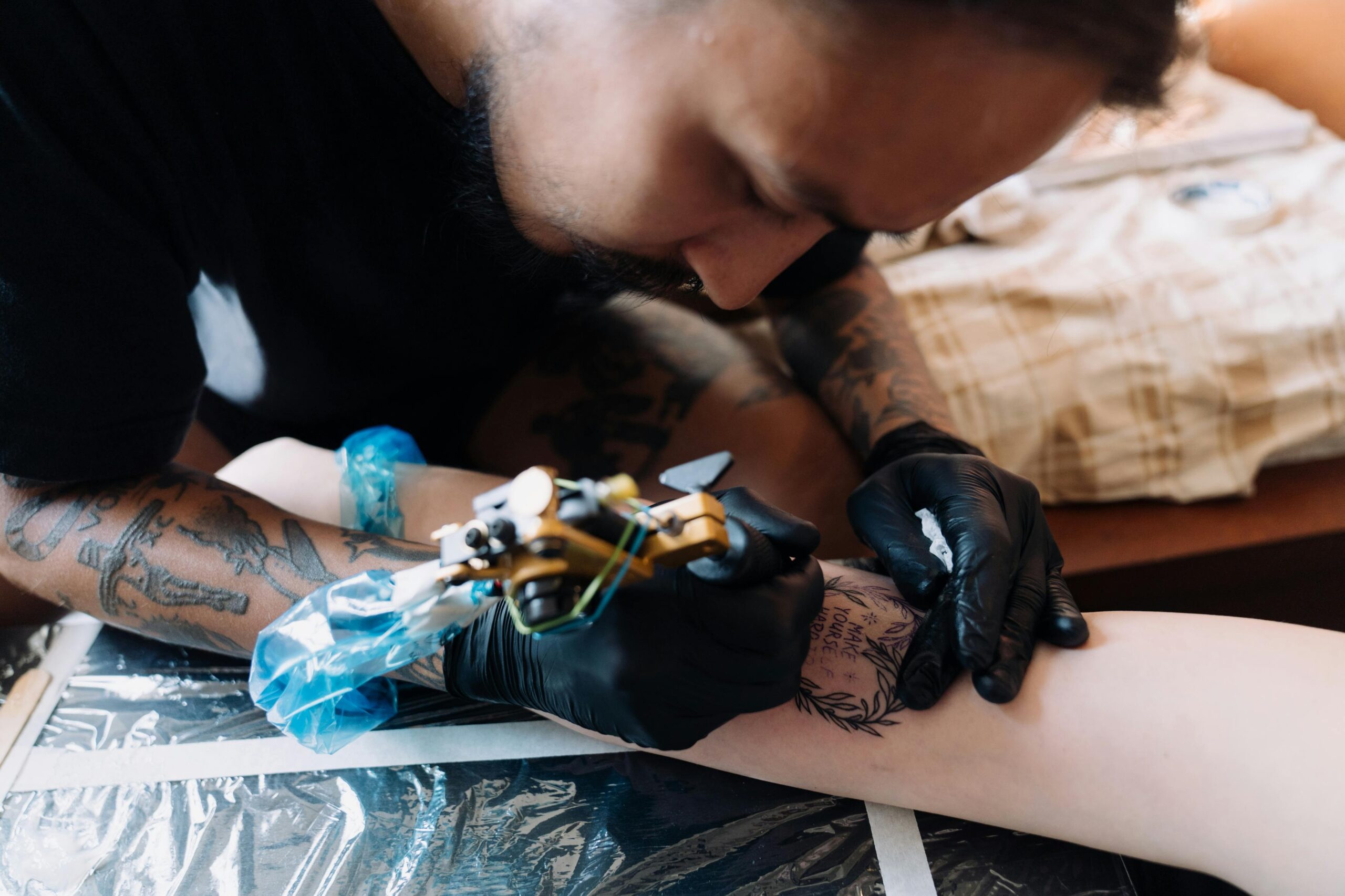
Prepare for Tomorrow’s Tattoo Industry
Ready to develop skills positioning you for success in the evolving tattoo industry? Our comprehensive tattoo courses provide timeless technical foundations, emerging technique exposure, and strategic career guidance—everything you need for sustained success regardless of trend shifts.
Join Canadian artists building future-ready careers through Omnia’s proven training methodology. With flexible payment plans starting at $30 per week, professional equipment included, and comprehensive training in both classic and contemporary techniques, you’ll develop the versatile capabilities modern tattoo careers require.
Explore our online tattoo course options today and start building the skills that sustain successful careers through industry evolution and aesthetic shifts.
The Learning Online Group, parent company of Omnia Tattoo Academy has supported over 15,000 students globally since 2019, providing job-ready skills as a modern alternative to class based education. Explore our specialized brands: Canadian Photography School, Canadian Beauty School, My Learning Online among others. With dedicated 1:1 Tutoring, Flexible Payment Plans and 24/7 Learning Access, Learning Online Group continues to lead the way in Vocational Education in Canada.
